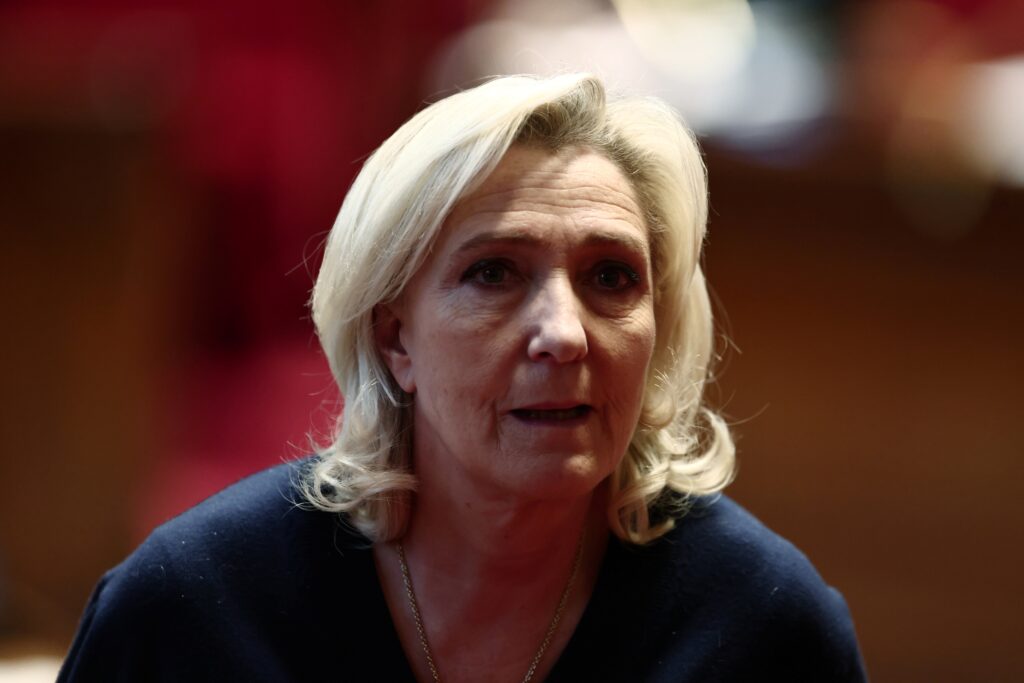Fleetwod and Lowry lift each other into Abu Dhabi lead
Friends Tommy Fleetwood and Shane Lowry shared the lead in the Abu Dhabi Championship after they were paired together on Thursday and both shot eight-under-par opening rounds of 64.The pair shared the lead with New Zealander Kazuma Kobori, South African Richard Sterne and Frenchman Adrien Saddier at the start of the last event of the DP Tour before the season-ending World Championship in Dubai.Lowry and Fleetwood, both previous winners of the event, were drawn in a group that also included a third Ryder Cup player Rasmus Hojgaard.”It was nice,” said Lowry. “I was pretty excited when I saw the group, my pairing today, and it was nice to go out there with the boys.”Fleetwood carded eight birdies and no bogeys, while Lowry fired nine birdies and dropped a single shot.”Something about me and Tommy,” the Irishman added. “I just like playing with him, your friend, and really good player too.”And you kind of feed off each other. It was nice.”Fleetwood agreed.”I’m so close to both the guys, Ryder Cup team-mates, played with Rasmus, who I’m close with last week. It was great,” the Englishman said.”You focus on your own game,” he added. “It shouldn’t make that much difference but definitely when you’re in a comfortable pairing or group it’s nice. It’s helpful.”Dane Hojgaard ended the round in a chasing pack of seven one shot off the lead.Another Ryder Cup player Ludvig Aberg made a hole-in-one on the par-three eighth and finished the day two shots back.
A la COP30 de Belem, les dirigeants constatent l’échec sur l’accord de Paris et appellent au sursaut
Un constat d’échec, mais aussi un peu d’espoir: des dirigeants internationaux ont admis à Belem jeudi que le monde n’avait pas réussi à limiter le réchauffement climatique comme l’envisageait l’accord de Paris il y a dix ans, mais cherché à donner une nouvelle impulsion face aux reculs de nombreux pays.”Nous avons échoué” à limiter le réchauffement climatique à 1,5°C par rapport à la période préindustrielle, qui était l’objectif le plus ambitieux de l’accord de 2015, a déploré le secrétaire général de l’ONU António Guterres dès l’ouverture du sommet, évoquant une “faillite morale”.Le président brésilien Luiz Inacio Lula da Silva a affirmé dans son sillage que “la fenêtre d’opportunité” pour agir “se ferme rapidement”, et fustigé les “mensonges” de “forces extrémistes” qui favorisent “la dégradation de l’environnement”.En prélude, l’ONU a confirmé que l’année 2025 serait la 2e ou 3e année la plus chaude jamais enregistrée.Mais “nous n’avons jamais été mieux équipés pour contre-attaquer”, a aussi dit le chef de l’ONU. Et d’autres vantent les progrès phénoménaux des énergies renouvelables qui font entrevoir un avenir sans pétrole.Des représentants de dizaines de pays, mais seulement une trentaine de chefs d’Etats et de gouvernements, ont répondu à l’invitation dans cette ville fluviale de l’Amazonie en prélude à la 30e conférence sur le climat de l’ONU (10-21 novembre).Le président français de la COP21 de Paris, Laurent Fabius, est intervenu avant eux, accompagné de son marteau vert resté célèbre pour avoir entériné l’accord emblématique.- “Avenir sans combustibles fossiles” -Le choix de la capitale de l’Etat du Para pour la COP a fait polémique en raison de ses infrastructures limitées qui ont renchéri la venue des petites délégations et des ONG. Au point que le Brésil a dû trouver des fonds pour loger gratuitement des délégués des pays les plus pauvres dans deux navires de croisière affrétés.Jamais la ville de quelque 1,4 million d’habitants, dont la moitié vivent dans des favelas, n’avait accueilli un tel événement international, et les autorités fédérales et du Para ont investi pour rénover ou construire des infrastructures.”La COP apporte à Belem la notoriété qu’elle mérite. C’est important que les regards soient tournés sur notre région, sur l’Amazonie”, dit à l’AFP Karol Farias, 34 ans, maquilleuse venue faire ses achats au marché Ver-o-Peso, l’un des lieux emblématiques, entièrement rénové.- Chantier -Environ 10.000 agents des forces de l’ordre ont été mobilisés, auxquels s’ajoutent 7.500 militaires déployés spécialement.Le Brésil ne cherchera pas de nouvelles décisions emblématiques, mais veut que la COP30 inscrive dans le marbre des engagements concrets et organise un suivi des promesses du passé, par exemple sur le développement des renouvelables.Le Brésil lancera jeudi un fonds dédié à la protection des forêts (TFFF) auquel Londres ne contribuera pas tout de suite, mais que Berlin envisage de financer. Plusieurs pays veulent aussi élargir les engagements à baisser les émissions de méthane, un gaz très réchauffant.- Prince William -Cent soixante-dix pays participent à la COP30, mais les Etats-Unis, deuxième pollueur mondial, n’enverront pas de délégation, au soulagement de ceux qui craignaient que l’administration Trump vienne faire de l’obstruction.Côté européen, le président français Emmanuel Macron, le chancelier allemand Friedrich Merz, le Premier ministre britannique Keir Starmer et le prince William sont attendus jeudi et vendredi.Mais le président autrichien a renoncé à cause du prix des hôtels. La plupart des dirigeants du G20, dont Chine et Inde, seront absents.Une partie du monde en développement reste sur sa faim après l’accord arraché dans la douleur l’an dernier à Bakou sur la finance climatique et veut remettre le sujet sur la table.”Ce n’est pas de la charité mais une nécessité”, déclare à l’AFP Evans Njewa, le diplomate du Malawi qui préside le groupe des pays les moins développés.L’Union européenne ou les petits Etats insulaires (Aosis) veulent surtout aller plus loin dans la réduction des émissions de gaz à effet de serre, en s’attaquant aux énergies fossiles.”Nombreux parmi nos pays n’arriveront pas à s’adapter à un réchauffement qui dépasserait les 2°C”, a confié à l’AFP Ilana Seid, diplomate de l’archipel pacifique des Palaos et présidente d’Aosis.Le Brésil, qui se veut un pont entre Nord et Sud, n’est pas exempt de paradoxes, après un feu vert donné à l’exploration pétrolière au large de l’Amazonie, une situation “très contradictoire”, assène à Belem Angela Kaxuyana, de la Coordination des organisations indigènes d’Amazonie brésilienne.
A la COP30 de Belem, les dirigeants constatent l’échec sur l’accord de Paris et appellent au sursaut
Un constat d’échec, mais aussi un peu d’espoir: des dirigeants internationaux ont admis à Belem jeudi que le monde n’avait pas réussi à limiter le réchauffement climatique comme l’envisageait l’accord de Paris il y a dix ans, mais cherché à donner une nouvelle impulsion face aux reculs de nombreux pays.”Nous avons échoué” à limiter le réchauffement climatique à 1,5°C par rapport à la période préindustrielle, qui était l’objectif le plus ambitieux de l’accord de 2015, a déploré le secrétaire général de l’ONU António Guterres dès l’ouverture du sommet, évoquant une “faillite morale”.Le président brésilien Luiz Inacio Lula da Silva a affirmé dans son sillage que “la fenêtre d’opportunité” pour agir “se ferme rapidement”, et fustigé les “mensonges” de “forces extrémistes” qui favorisent “la dégradation de l’environnement”.En prélude, l’ONU a confirmé que l’année 2025 serait la 2e ou 3e année la plus chaude jamais enregistrée.Mais “nous n’avons jamais été mieux équipés pour contre-attaquer”, a aussi dit le chef de l’ONU. Et d’autres vantent les progrès phénoménaux des énergies renouvelables qui font entrevoir un avenir sans pétrole.Des représentants de dizaines de pays, mais seulement une trentaine de chefs d’Etats et de gouvernements, ont répondu à l’invitation dans cette ville fluviale de l’Amazonie en prélude à la 30e conférence sur le climat de l’ONU (10-21 novembre).Le président français de la COP21 de Paris, Laurent Fabius, est intervenu avant eux, accompagné de son marteau vert resté célèbre pour avoir entériné l’accord emblématique.- “Avenir sans combustibles fossiles” -Le choix de la capitale de l’Etat du Para pour la COP a fait polémique en raison de ses infrastructures limitées qui ont renchéri la venue des petites délégations et des ONG. Au point que le Brésil a dû trouver des fonds pour loger gratuitement des délégués des pays les plus pauvres dans deux navires de croisière affrétés.Jamais la ville de quelque 1,4 million d’habitants, dont la moitié vivent dans des favelas, n’avait accueilli un tel événement international, et les autorités fédérales et du Para ont investi pour rénover ou construire des infrastructures.”La COP apporte à Belem la notoriété qu’elle mérite. C’est important que les regards soient tournés sur notre région, sur l’Amazonie”, dit à l’AFP Karol Farias, 34 ans, maquilleuse venue faire ses achats au marché Ver-o-Peso, l’un des lieux emblématiques, entièrement rénové.- Chantier -Environ 10.000 agents des forces de l’ordre ont été mobilisés, auxquels s’ajoutent 7.500 militaires déployés spécialement.Le Brésil ne cherchera pas de nouvelles décisions emblématiques, mais veut que la COP30 inscrive dans le marbre des engagements concrets et organise un suivi des promesses du passé, par exemple sur le développement des renouvelables.Le Brésil lancera jeudi un fonds dédié à la protection des forêts (TFFF) auquel Londres ne contribuera pas tout de suite, mais que Berlin envisage de financer. Plusieurs pays veulent aussi élargir les engagements à baisser les émissions de méthane, un gaz très réchauffant.- Prince William -Cent soixante-dix pays participent à la COP30, mais les Etats-Unis, deuxième pollueur mondial, n’enverront pas de délégation, au soulagement de ceux qui craignaient que l’administration Trump vienne faire de l’obstruction.Côté européen, le président français Emmanuel Macron, le chancelier allemand Friedrich Merz, le Premier ministre britannique Keir Starmer et le prince William sont attendus jeudi et vendredi.Mais le président autrichien a renoncé à cause du prix des hôtels. La plupart des dirigeants du G20, dont Chine et Inde, seront absents.Une partie du monde en développement reste sur sa faim après l’accord arraché dans la douleur l’an dernier à Bakou sur la finance climatique et veut remettre le sujet sur la table.”Ce n’est pas de la charité mais une nécessité”, déclare à l’AFP Evans Njewa, le diplomate du Malawi qui préside le groupe des pays les moins développés.L’Union européenne ou les petits Etats insulaires (Aosis) veulent surtout aller plus loin dans la réduction des émissions de gaz à effet de serre, en s’attaquant aux énergies fossiles.”Nombreux parmi nos pays n’arriveront pas à s’adapter à un réchauffement qui dépasserait les 2°C”, a confié à l’AFP Ilana Seid, diplomate de l’archipel pacifique des Palaos et présidente d’Aosis.Le Brésil, qui se veut un pont entre Nord et Sud, n’est pas exempt de paradoxes, après un feu vert donné à l’exploration pétrolière au large de l’Amazonie, une situation “très contradictoire”, assène à Belem Angela Kaxuyana, de la Coordination des organisations indigènes d’Amazonie brésilienne.
Présidentielle: Le Pen “annoncera sa décision” après son procès en appel, sans attendre la cassation
Candidate déclarée à la prochaine présidentielle malgré son inéligibilité, Marine Le Pen affirme qu’elle ne se présentera “évidemment pas” si sa peine est confirmée en appel et qu’elle “annoncera donc (sa) décision” dans la foulée, sans attendre une éventuelle cassation.Le Rassemblement national sera fixé sur le nom de sa candidate (ou de son candidat) avant les prochaines vacances d’été. Tel est en tout cas l’agenda fixé par Mme Le Pen dans un entretien au mensuel conservateur Causeur, publié jeudi.Condamnée en première instance – dans l’affaire des assistants parlementaires européens – à une peine d’inéligibilité de cinq ans avec application immédiate, la triple candidate à l’élection présidentielle admet qu’elle ne pourra “évidemment pas” se représenter une quatrième fois si cette peine devait être confirmée en appel.”Je prendrai ma décision de me présenter ou non lors du rendu de l’arrêt de la cour d’appel”, ajoute-t-elle, évacuant l’hypothèse d’un suspense prolongé en cas de pourvoi en cassation. “On ne sait pas quand une telle décision serait rendue et on ne peut pas se lancer dans une campagne présidentielle au dernier moment”, explique-t-elle.Son second procès étant programmé du 13 janvier au 12 février 2026, avec un délibéré attendu quatre mois plus tard, “j’annoncerai donc ma décision cet été”, précise celle qui s’était hissée au second tour en 2017 et en 2022 face à Emmanuel Macron.Un calendrier choisi aussi “pour ne pas hypothéquer la candidature de Jordan Bardella dans le cas où il devrait y aller”, souligne-t-elle, confirmant ainsi le statut de dauphin du jeune président du parti à la flamme.
Tight UK security ahead of match against Israeli club
More than 700 police deployed across the UK city of Birmingham Thursday for protests planned ahead of a football match between Maccabi Tel Aviv and Aston Villa, with visiting Israeli fans barred.The UK government last month vowed to reverse the ban on Maccabi fans attending the Europa League match in the city in central England that has a significant Muslim population after widespread criticism of the decision taken by local safety advisors and police.However, the Israeli club later announced it would decline any tickets for its fans, citing safety concerns.Villa have said they are not selling tickets for the vacant away end of their Villa Park stadium.Birmingham, the UK’s second-largest city, has been the scene of regular pro-Palestinian rallies over the last two years.Close to Villa’s stadium on Thursday there was a large, visible police presence, an AFP correspondent saw.Local police said protests by different groups were scheduled Thursday near Villa Park, including a pro-Palestinian demonstration demanding Israel be excluded from international football.A pro-Israeli group has also organised a Maccabi Solidarity Rally, with both protests set to kick off around 6:00 pm (1800 GMT), two hours before the match is due to begin.”We are experienced at policing high-profile football matches and demonstrations, and for many weeks now, we have been working closely with different faith and local community groups to listen to their views and concerns,” West Midlands Police said in statement.Signs had been hung near the stadium reading “no war games allowed” and “Give Zionism the Red Card”, while channels spearheaded by far-right activist Tommy Robinson have made Islamophobic statements about the match and planned protests.One school near the stadium confirmed to AFP it was closing early to avoid disruption, with others reportedly planning to do the same.- ‘High risk’ -Police have classified the fixture as “high risk”, citing “violent clashes and hate crime offences” during a Europa League match in Amsterdam between Maccabi and local team Ajax last November.That game sparked two days of clashes between locals and Israeli fans in the Dutch city.But ahead of Thursday’s match things were calm in Birmingham.Residents Michael Harrison, 38, and Lisa Evans, 47, working at a small business near Villa Park, were not worried about possible protests.Harrison said Israeli fans should have been given tickets to attend the match.”The game, it’s about bringing people together,” he said, adding he understood the fears but the fans could have been searched properly.Maccabi Tel Aviv’s decision to turn down tickets also came after Israeli police called off an Israeli Premier League match between the club and city rivals Hapoel because of “riots” between rival fans.The team has insisted its supporters were not involved in the unrest and criticised “hate-filled falsehoods” about its supporters for creating a “toxic atmosphere”.Aston Villa have urged supporters not to display political symbols during the match — a practice banned under protocols issued by UEFA, the governing body of European football.Ayoub Khan, the independent MP for the area covering Villa Park who was elected last year on a pro-Palestinian ticket, said there was a “large concentration of Muslims” in the local area who had voiced fears about racism.




